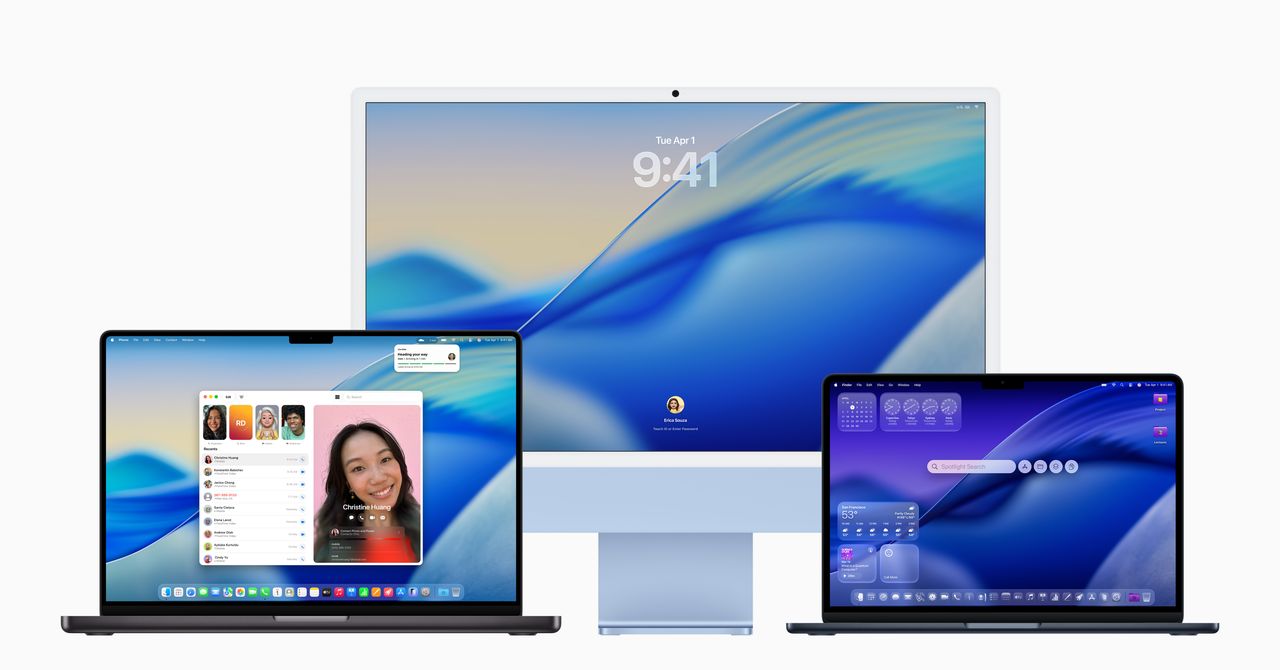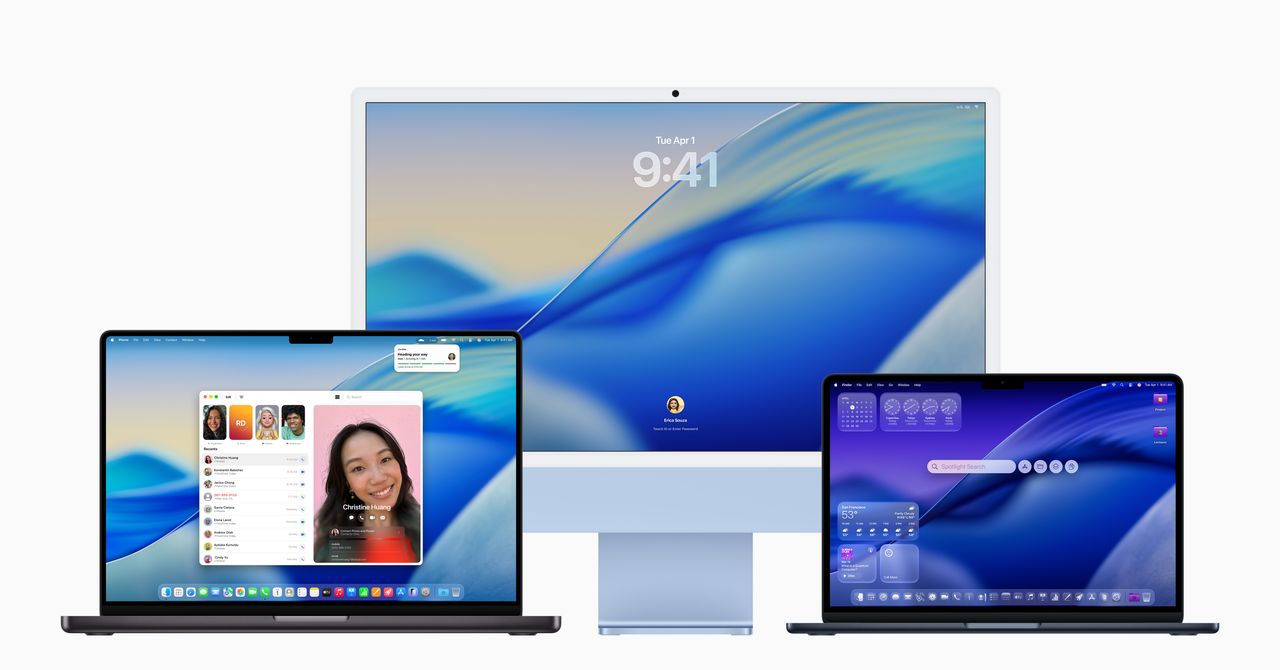The End Of Intel Macs: What It Means For Apple Users

Welcome to your ultimate source for breaking news, trending updates, and in-depth stories from around the world. Whether it's politics, technology, entertainment, sports, or lifestyle, we bring you real-time updates that keep you informed and ahead of the curve.
Our team works tirelessly to ensure you never miss a moment. From the latest developments in global events to the most talked-about topics on social media, our news platform is designed to deliver accurate and timely information, all in one place.
Stay in the know and join thousands of readers who trust us for reliable, up-to-date content. Explore our expertly curated articles and dive deeper into the stories that matter to you. Visit Best Website now and be part of the conversation. Don't miss out on the headlines that shape our world!
Table of Contents
The End of Intel Macs: What it Means for Apple Users
The transition is complete. Apple's iconic computers are now entirely powered by its own silicon, marking the end of an era for Intel-based Macs. This monumental shift, which began in late 2020, has profoundly impacted Apple users, offering both exciting advancements and some challenges along the way. This article delves into the implications of this transition, exploring the benefits, drawbacks, and the future of Apple's ecosystem.
The Apple Silicon Revolution: A Performance Leap?
Apple's move to its own M-series chips (M1, M2, M1 Pro, M1 Max, M2 Pro, M2 Max, and the powerful M1 Ultra) wasn't just a change of hardware; it was a strategic overhaul designed to maximize performance and efficiency. Early benchmarks consistently showed impressive gains in speed and battery life compared to Intel-based counterparts. This translated to smoother multitasking, faster application launch times, and significantly improved power efficiency, leading to longer usage on a single charge. For creative professionals, the enhanced graphical capabilities of the M1 Pro, M1 Max, M2 Pro, and M2 Max chips were particularly game-changing, enabling faster rendering and more demanding workflows.
The Challenges of Transitioning Away from Intel
While the performance benefits are undeniable, the shift to Apple Silicon wasn't without its growing pains. The initial transition period saw some compatibility issues, with certain older applications requiring updates or failing to run natively on the new chips. This forced users to either wait for updates from developers or rely on Rosetta 2, Apple's translation layer, which while effective, can slightly impact performance. This transition also meant saying goodbye to certain peripherals and software specifically designed for Intel processors. Users had to check for compatibility before upgrading.
Long-Term Benefits and the Future of Apple Silicon
The long-term implications of Apple's silicon transition are largely positive. The tighter integration between hardware and software allows Apple to optimize its operating system (macOS) for its own chips, leading to a more seamless and efficient user experience. This level of control also enables Apple to innovate faster, pushing the boundaries of what's possible in terms of performance and power efficiency. Furthermore, the move towards a unified architecture across its devices (iPhones, iPads, Macs) allows for better cross-device compatibility and workflow integration. We can expect continued advancements in Apple Silicon, with more powerful and energy-efficient chips to come in the years ahead.
What This Means for You: Should You Upgrade?
Whether or not you should upgrade to an Apple Silicon Mac depends on your individual needs and priorities. If you're a professional who relies on demanding applications, the performance gains might justify an upgrade. However, if your current Intel-based Mac is still meeting your needs and your applications are compatible, upgrading might not be immediately necessary. Consider these factors:
- Application Compatibility: Check if your essential applications are compatible with Apple Silicon.
- Performance Needs: Evaluate if your current Mac's performance is sufficient for your tasks.
- Budget: Apple Silicon Macs can be a significant investment.
- Battery Life: If extended battery life is a priority, Apple Silicon offers a noticeable improvement.
Ultimately, the end of Intel Macs represents a significant milestone in Apple's history and a considerable leap forward in computing technology. While the transition presented challenges, the advantages of Apple Silicon are undeniable, shaping a future of powerful, efficient, and seamlessly integrated Apple devices. Are you ready for the future of computing? Let us know your thoughts in the comments below.

Thank you for visiting our website, your trusted source for the latest updates and in-depth coverage on The End Of Intel Macs: What It Means For Apple Users. We're committed to keeping you informed with timely and accurate information to meet your curiosity and needs.
If you have any questions, suggestions, or feedback, we'd love to hear from you. Your insights are valuable to us and help us improve to serve you better. Feel free to reach out through our contact page.
Don't forget to bookmark our website and check back regularly for the latest headlines and trending topics. See you next time, and thank you for being part of our growing community!
Featured Posts
-
 Queens 2025 Kartals Singles Defeat Boulter And Raducanus Doubles Exit
Jun 11, 2025
Queens 2025 Kartals Singles Defeat Boulter And Raducanus Doubles Exit
Jun 11, 2025 -
 Jason Momoas Girlfriend 2025 Confirmed Details And Speculation
Jun 11, 2025
Jason Momoas Girlfriend 2025 Confirmed Details And Speculation
Jun 11, 2025 -
 Intels Departure Assessing The Impact On Mac Performance And Pricing
Jun 11, 2025
Intels Departure Assessing The Impact On Mac Performance And Pricing
Jun 11, 2025 -
 26 Year Old You Tube Star P2isthe Name Dead Official Cause Of Death Released
Jun 11, 2025
26 Year Old You Tube Star P2isthe Name Dead Official Cause Of Death Released
Jun 11, 2025 -
 From The Brink Of Defeat Alcarazs Epic French Open Comeback Analyzed
Jun 11, 2025
From The Brink Of Defeat Alcarazs Epic French Open Comeback Analyzed
Jun 11, 2025
